- Berlin TV Tower
- Friedrichstadt Palast
- Tropical Islands
- Illuseum Berlin
- Sachsenhausen Concentration Camp
- DDR Museum
- Panoramapunkt Berlin
- Big Bus Berlin Hop-on Hop-off Tours
- City Sightseeing Berlin Hop-on Hop-off Tours
- Reichstag Tours
- Berlin Wall Museum
- Berlin Welt Balloon
- Berlin Icebar
- Madame Tussauds
- Samurai Museum Berlin
- LEGOLAND Discovery Centre Berlin
- Fotografiska Tickets
Discover Alte Nationalgalerie where 19th-century masterpieces come to life
The Altes Museum is a gateway to the ancient world, offering a glimpse into the art and culture of Greece, Rome, and Etruria. Located on Berlin’s Museum Island, it was designed by Karl Friedrich Schinkel and opened in 1830 as Germany’s fir...
Also Known As
Old Museum
Founded On
1830
Founded By
Karl Friedrich Schinkel
Quick Information
ADDRESS
Bodestraße 1-3, 10178 Berlin, Germany
RECOMMENDED DURATION
1 hour
Timings
10:00–18:00
VISITORS PER YEAR
204000
EXPECTED WAIT TIME - STANDARD
30-60 mins (Peak), 0-30 mins (Off Peak)
EXPECTED WAIT TIME - SKIP THE LINE
0-30 mins (Peak), 0-30 mins (Off Peak)
Did you know?
Opened in 1830, the Altes Museum was designed solely for fine art and antiquities, while natural history and ethnographic artifacts were placed elsewhere. This separation reflected Enlightenment-era ideals, which sought to separate ‘high culture’ from the study of nature and anthropology.
Before opening to the public, the Altes Museum housed the Prussian royal collection, featuring Greek and Roman antiquities acquired through diplomacy, purchases, and military campaigns. Some artifacts were taken from Napoleon’s seized collections after Prussia’s wars against France.
The grand rotunda, inspired by Rome’s Pantheon, was designed as more than just an architectural feature. Its circular form symbolized the universality of knowledge, marking antiquity as the foundation of European thought and intellectual enlightenment.
Alte Nationalgalerie highlights
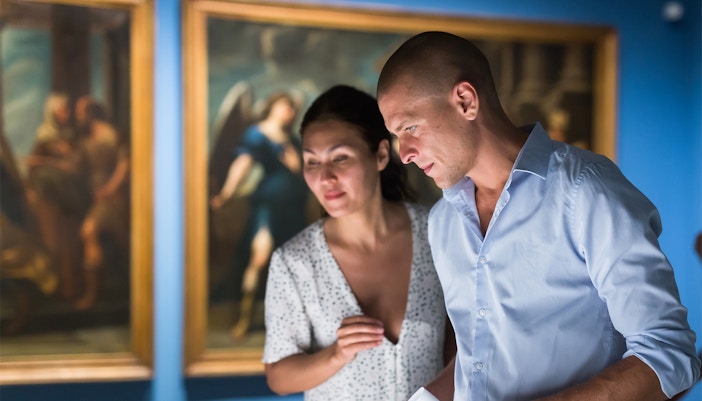
The Golden Madonna
The Golden Madonna, or Virgin of Mercy, is a medieval wooden sculpture that is also one of the oldest surviving sculptures in Berlin. Due to its age, it is an object of significant cultural and historical value and symbolizes the city's rich artistic heritage.

The Menzel Room
For admirers of German Realist painter Adolph von Menzel, the Menzel Room is a must-see. This special gallery showcases an extensive collection of his paintings and drawings, offering a fascinating glimpse into his extraordinary talent and artistic vision. Some of the iconic artwork you’ll see here include The Balcony Room' (1845) and 'Iron Rolling Mill' (1875).

Caspar David Friedrich’s ‘The Monk by the Sea’
A masterpiece of Romanticism, this painting captures the haunting beauty of solitude and nature.
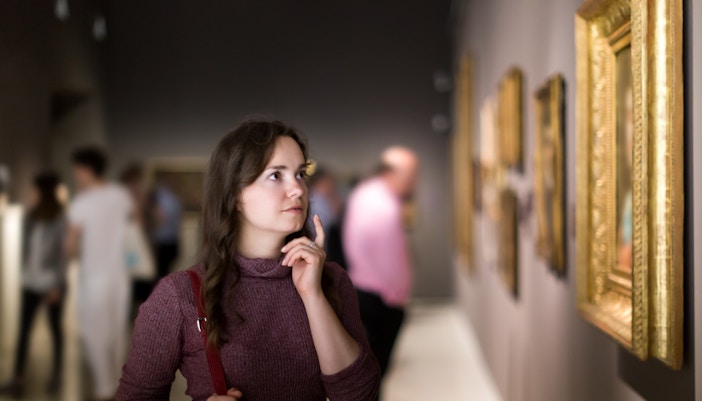
Claude Monet’s ‘The Houses of Parliament’
A brilliant example of Impressionism, Monet’s series portrays the changing light over London’s iconic landmark.

Édouard Manet's ‘The Execution of Emperor Maximilian’
A powerful and dramatic depiction of a historical event, this painting showcases Manet's bold use of composition and color.
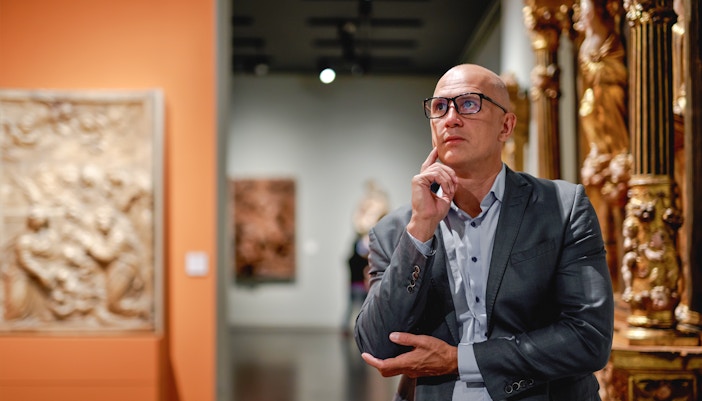
Max Liebermann’s ‘The Flax Barn’
A stunning example of German Impressionism, this painting beautifully captures the rural landscape with a sense of light and texture.
Permanent exhibitions to look out for
The Alte Nationalgalerie in Berlin offers a rich array of permanent exhibitions that showcase the evolution of 19th-century art. Here are some highlights:
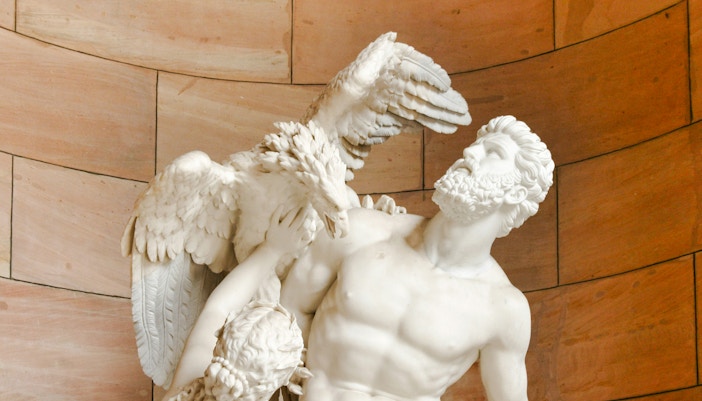
Art of the 19th century
This extensive collection spans the Neoclassicist, Romanticist, Impressionist, and Secessionist art movements, featuring over 200 paintings, sculptures, and graphic works by approximately 80 artists.
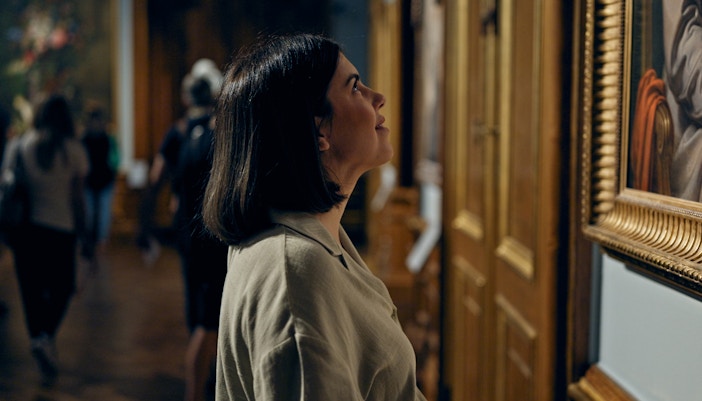
Secessions: Klimt, Stuck, Liebermann
This exhibition compares the art scenes of Munich, Vienna, and Berlin at the turn of the 20th century, highlighting works by Gustav Klimt, Franz von Stuck, and Max Liebermann.
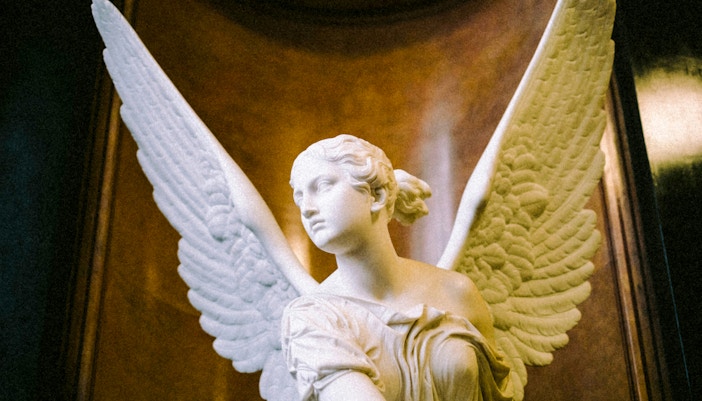
Ideal and Form: 19th-century sculpture
Housed in the Friedrichswerdersche Kirche, this exhibition presents sculptures from the era of Karl Friedrich Schinkel to the German Empire, offering a unique experience in a historic architectural setting.
Frequently asked questions about the Alte Nationalgalerie
The Alte Nationalgalerie showcases 19th-century artworks, featuring paintings and sculptures shaped by movements like Neoclassicism, Romanticism, and Modernism.
The Alte Nationalgalerie in Berlin showcases masterpieces like Adolph Menzel’s The Balcony Room and Iron Rolling Mill, Johann Gottfried Schadow’s Double Statue of the Princesses Luise and Friederike of Prussia, and Caspar David Friedrich’s Monk by the Sea.
The National Gallery Berlin, built between 1866 and 1876, is over 145 years old.
Yes, the gallery is open throughout the year, though it may have special closures or hours during holidays or for maintenance. It's recommended to check the gallery’s website for up-to-date information.
Yes, the museum is wheelchair accessible. There are ramps and elevators for easier access. It’s best to contact the museum in advance to arrange special services.
Designed in a neoclassical style by Friedrich August Stüler, the building is celebrated for its grand portico and columns, which reflect the architectural trends of the 19th century.
